Article category
- Page Path
-
- HOME
- ARTICLE CATEGORY
- Article category
- Review Article
- Endocrinology
- A review of vitamin D deficiency and vitamin D receptor polymorphisms in endocrine-related disorders
- Nur Faten Hafizah Rosli, Noor Shafina Mohd Nor, Rose Adzrianee Adnan, Siti Hamimah Sheikh Abdul Kadir
- Clin Exp Pediatr. 2025;68(1):30-52. Published online November 6, 2024
-

· The prevalence of vitamin D deficiency is high among children and adolescents and mainly attributed to changes in environmental factors.
· Vitamin D hormone-like properties are associated with many endocrine-related disorders.
· The effect of vitamin D is modulated by the vitamin D receptor, polymorphisms of which are reportedly associated with an increased risk of disease development in children and adolescents.
- Other
- Global trends in importance of 24-hour movement behaviors to pediatric health: implications for South Korea
- Eun-Young Lee, Reyana Jayawardena, Seiyeong Park, Justin Y Jeon, Yeon-Soo Kim, Mark S. Tremblay
- Clin Exp Pediatr. 2025;68(1):16-29. Published online November 11, 2024
-

· The 24-hour movement behavior paradigm provides an important framework for future pediatric health promotion efforts.
· Policy priorities should include advancing surveillance and monitoring assessments related to 24-hour movement behaviors, evaluating their implementation in school and government policies, and building preparedness for future pandemics and natural disasters, including climate change, by promoting healthy 24-hour movement behaviors.
· Future research should advocate for the promotion of 24- hour movement behaviors.
- Microplastic and human health with focus on pediatric well-being: a comprehensive review and call for future studies
- Rogers Wainkwa Chia, Ntegang Venant Atem, Jin-Yong Lee, Jihye Cha
- Clin Exp Pediatr. 2025;68(1):1-15. Published online November 6, 2024
-

· Milk and formula are common sources of microplastic in infants.
· Water and air are the most common sources of microplastic pollution from infancy to adolescence.
· Microplastic use by children of all ages can cause cell damage and affect their health.
· Microplastics present in children can be quantified using a stereomicroscope and characterized using micro- Fourier transform infrared spectroscopy.
- Clinical Note
- Oncology
- Right ventricular mass in a 10-year-old girl with osteosarcoma: an unusual case of asymptomatic cardiac metastasis
- Jun Ah Lee, Hyun-Ju Lim, Jong Woong Park, Sang-Hoon Shin, Mi Hyang Kwak
- Clin Exp Pediatr. 2024;67(12):725-727. Published online November 26, 2024
-
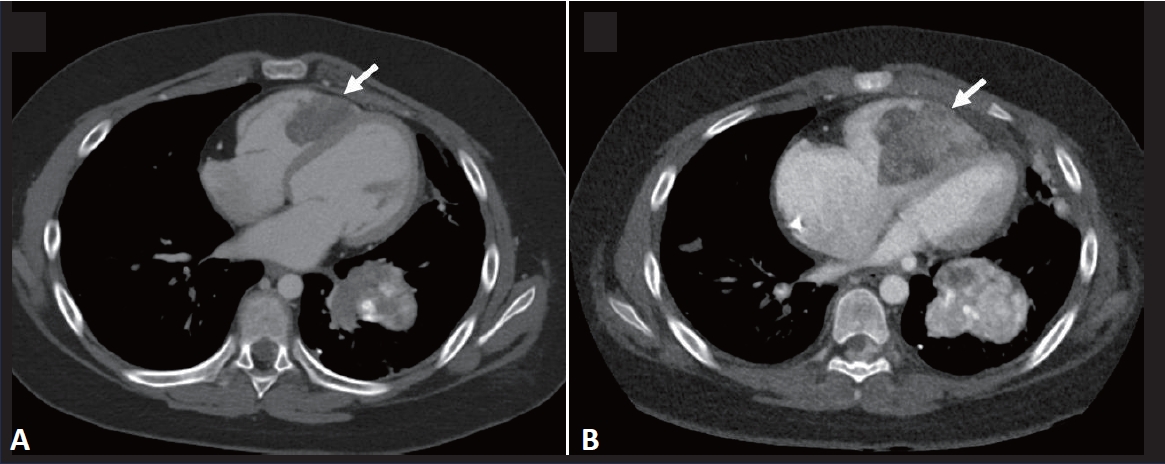
- Original Article
- Other
- Balance assessment with decreased base of support for children with disabilities
- Guilherme M. Cesar, Madison Giebler, Thad W. Buster, Judith M. Burnfield
- Clin Exp Pediatr. 2024;67(12):718-724. Published online November 11, 2024
-

Question: Can a balance task with narrowed base of support indicate overall functional balance control in children with disabilities?
Finding: While single-limb standing could explain overall balance control for children with disabilities, it was unrelated with balance control for typically developing children.
Meaning: One balance task with narrowed base of support can be used as practical assessment of balance abilities for children with disabilities when allocated session time is of concern.
- Infection
- Clinical, biochemical, and genetic study of TACE/TNF-α/ACE signaling pathway in pediatric COVID-19 infection
- Ahmed El-Abd Ahmed, Sawsan M.A. Abuhamdah, Mohammed H. Hassan, Nagwan I. Rashwan, Eman A. Abd-Elmawgood, Haggagy Mansour, Hoda S. Sherkawy, Shymaa G. Rizk
- Clin Exp Pediatr. 2024;67(12):704-717. Published online November 27, 2024
-
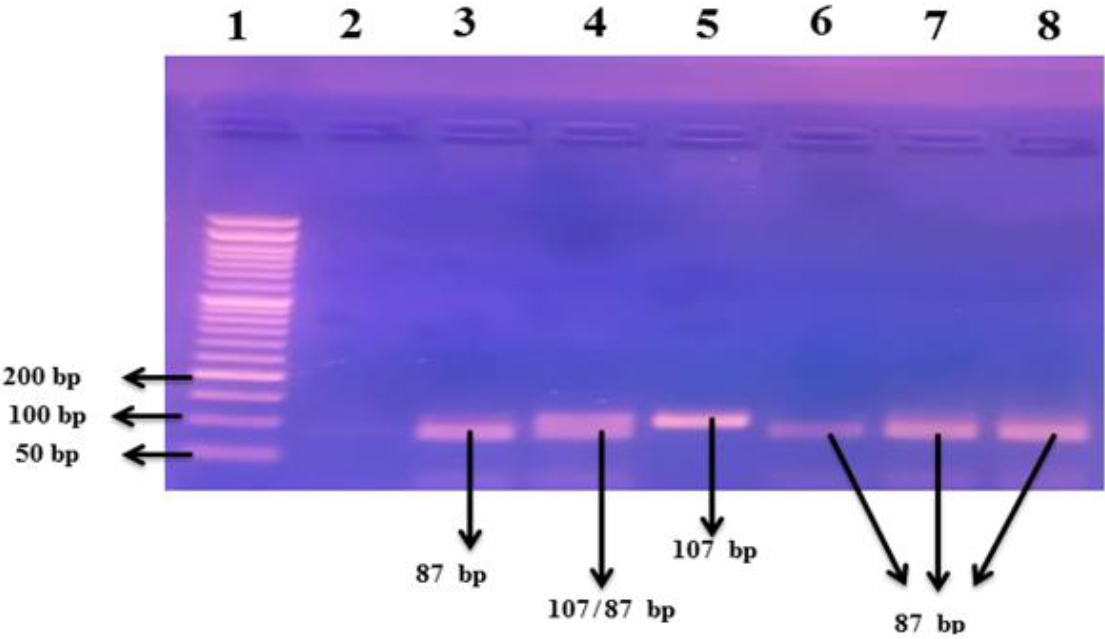
Question: Is the tumor necrosis factor (TNF) signaling pathway (TNF-α-converting enzyme [TACE]/TNF-α/angiotensin converting enzyme [ACE]) involved in pediatric coronavirus disease 2019 (COVID-19) infection?
Finding: Significantly increased circulating TACE/TNF-α and decreased ACE2 levels were noted. TNF-α-308G/A plays a significant role in susceptibility to COVID-19 infection among children. The ACE (I/D) (rs4646994) and ACE2 (rs2285666) single nucleotide polymorphisms lack significant associations with pediatric COVID-19 infection.
Meaning: The TNF signaling pathway participates in pediatric COVID-19 infection.
- Cardiology
- Comparative analysis of adolescent hypertension definitions for predicting early adulthood carotid artery intima-media thickness: Tehran lipid and glucose study
- Maryam Barzin, Shirin Yaghoobpoor, Maryam Mahdavi, Behnaz Abiri, Majid Valizadeh, Fereidoun Azizi, Pooneh Dehghan, Farhad Hosseinpanah
- Clin Exp Pediatr. 2024;67(12):694-703. Published online September 12, 2024
-
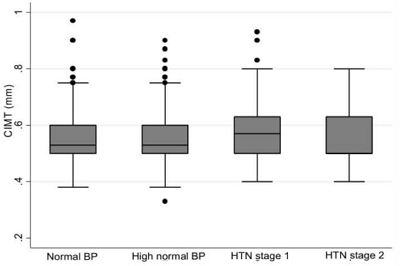
Question: What is the prevalence of HTN among adolescents enrolled in the TLGS according to 3 different accepted definitions (4th report, ESH, and AAP-CPG). Also, what is the ability of each of these definitions in predicting early adulthood CIMT, as a surrogate for cardiovascular disease events?
Finding: The highest and lowest prevalence of stage 1 HTN was observed with the AAP-CPG (17.7%) and ESH (8.8%), respectively. Similarly, the highest and lowest prevalence of stage 2 HTN was noted with the AAP-CPG (1.5%) and ESH (0.8%), respectively. The highest to lowest predictive abilities belonged to the 4th report, ESH, and AAP-CPG, respectively.
Meaning: Among the various definitions of pediatric HTN, the 4th report offered the best ability to predict a high CIMT during early adulthood, followed by the ESH and AAP-CPG.
- General Pediatrics
- Role of proper postnatal care in continued exclusive breastfeeding among young Indonesian mothers
- Wahyu Triadmajani, Shinta Prawitasari, Abdul Wahab
- Clin Exp Pediatr. 2024;67(12):686-693. Published online September 12, 2024
-
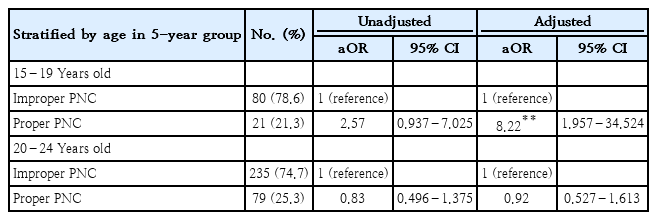
Question: Is proper postnatal care (PNC) associated with exclusive breastfeeding (EBF) practice among young Indonesian mothers?
Finding: Proper PNC elevates the likelihood of EBF among Indonesian adolescent mothers aged 15–19 years.
Meaning: Breastfeeding services should be provided during the early postnatal period to support EBF practice among adolescent mothers. High-quality PNC is a tailored intervention for vulnerable populations.
- Nonpharmacological interventions for managing postoperative pain and anxiety in children: a randomized controlled trial
- Edlin Glane Mathias, Mamatha Shivananda Pai, Vijay Kumar, Dinesh Narayanakurup, Malavika Kulkarni, Vasudeva Guddattu, Ann-Cathrine Bramhagen, Baby S Nayak, Anice George
- Clin Exp Pediatr. 2024;67(12):677-685. Published online October 31, 2024
-
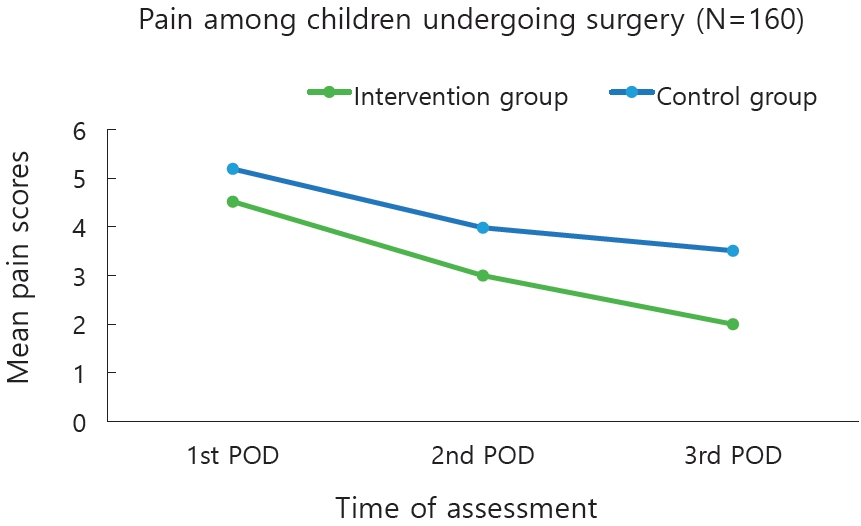
Question: What is the effect of nonpharmacological interventions on postoperative pain and anxiety among children.
Finding: Nurse-provided distraction interventions reduce pain and anxiety among pediatric surgical patients.
Meaning: The findings suggest that nonpharmacological interventions provided postoperatively to children reduce their pain and anxiety levels.
- Editorial
- Allergy
- Comorbidities of allergic rhinitis in children
- Yong Ju Lee
- Clin Exp Pediatr. 2024;67(12):675-676. Published online July 31, 2024
-
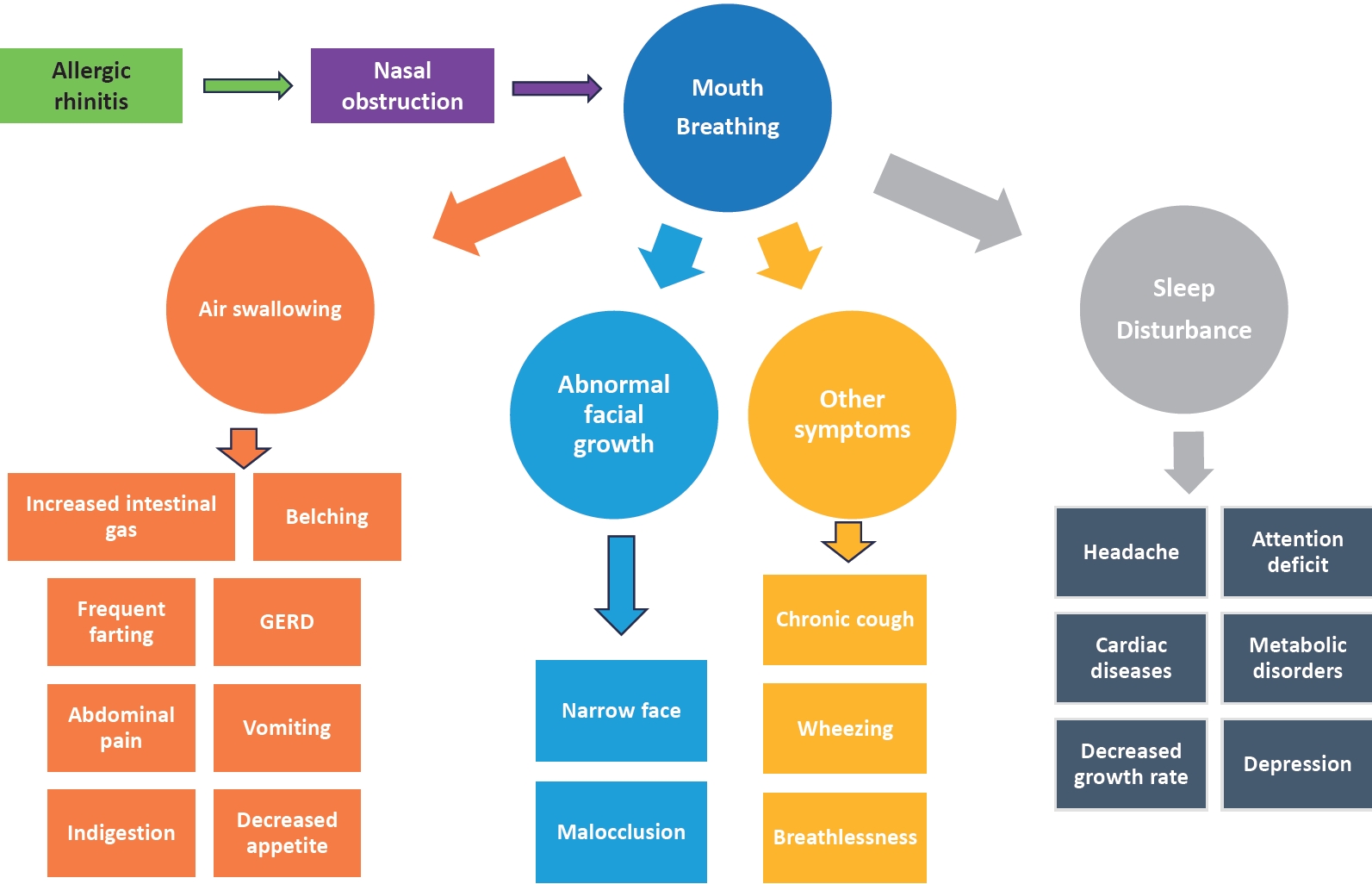
· Allergic rhinitis in children often goes undiagnosed or untreated, with significant systemic complications like sleep disorders, growth issues, and gastrointestinal symptoms linked to nasal obstruction.
· A patient-centered action plan that considers symptom severity, preferences, and comprehensive management of associated complications is essential for effective treatment.
- Advancements in food allergen immunotherapy: improving quality of life and reducing risks
- Jihyun Kim
- Clin Exp Pediatr. 2024;67(12):672-674. Published online July 31, 2024
-
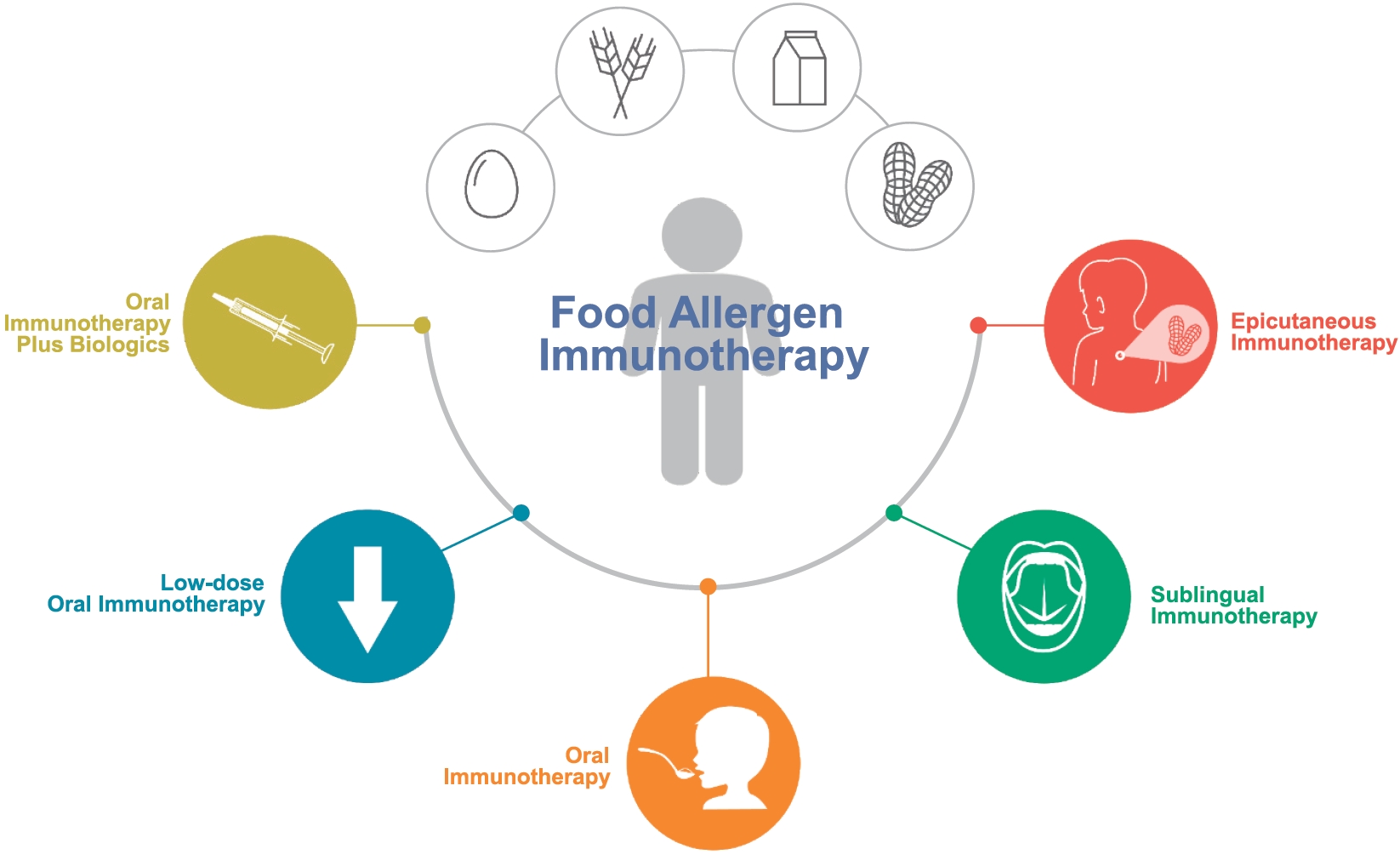
· Pediatric food allergies considerably impair patient and family quality of life, particularly those with persistent allergies to common food allergens.
· Recent research has focused on developing diverse approaches to food allergen immunotherapy, showing promising outcomes of oral, sublingual, and epicutaneous immuno therapies.
· Critical considerations in immunotherapy candidate selection underscore the need for personalized approaches and reliable biomarkers in future studies to improve treatment outcomes.
- Review Article
- Adolescence Medicine
- Diet-related behaviors affecting health and substance use among children and adolescents
- Ji-Hyun Seo, Sochung Chung
- Clin Exp Pediatr. 2024;67(12):664-671. Published online October 31, 2024
-
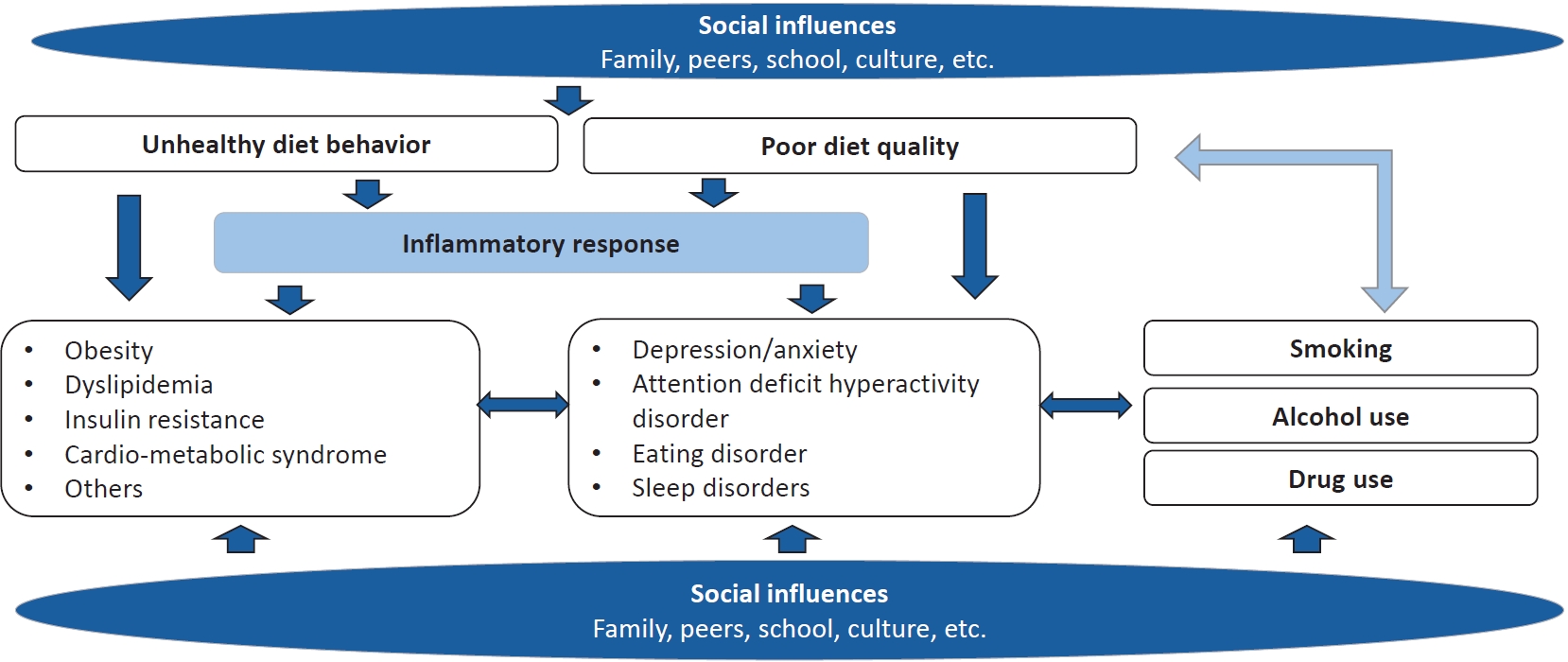
· Diet behaviors in children and adolescents are influenced by environmental and sociocultural factors.
· Unhealthy diet behaviors and poor diet quality are the main contributing factors to noncommunicable diseases and mental health problems during childhood and adolescence.
· Smoking and alcohol drinking in children and adolescents may be associated with unhealthy diet behavior or poor diet quality.
- Neonatology (Perinatology)
- Strategies to support language development in neonatal intensive care unit: a narrative review
- Ju Sun Heo, Ee-Kyung Kim
- Clin Exp Pediatr. 2024;67(12):651-663. Published online November 6, 2024
-
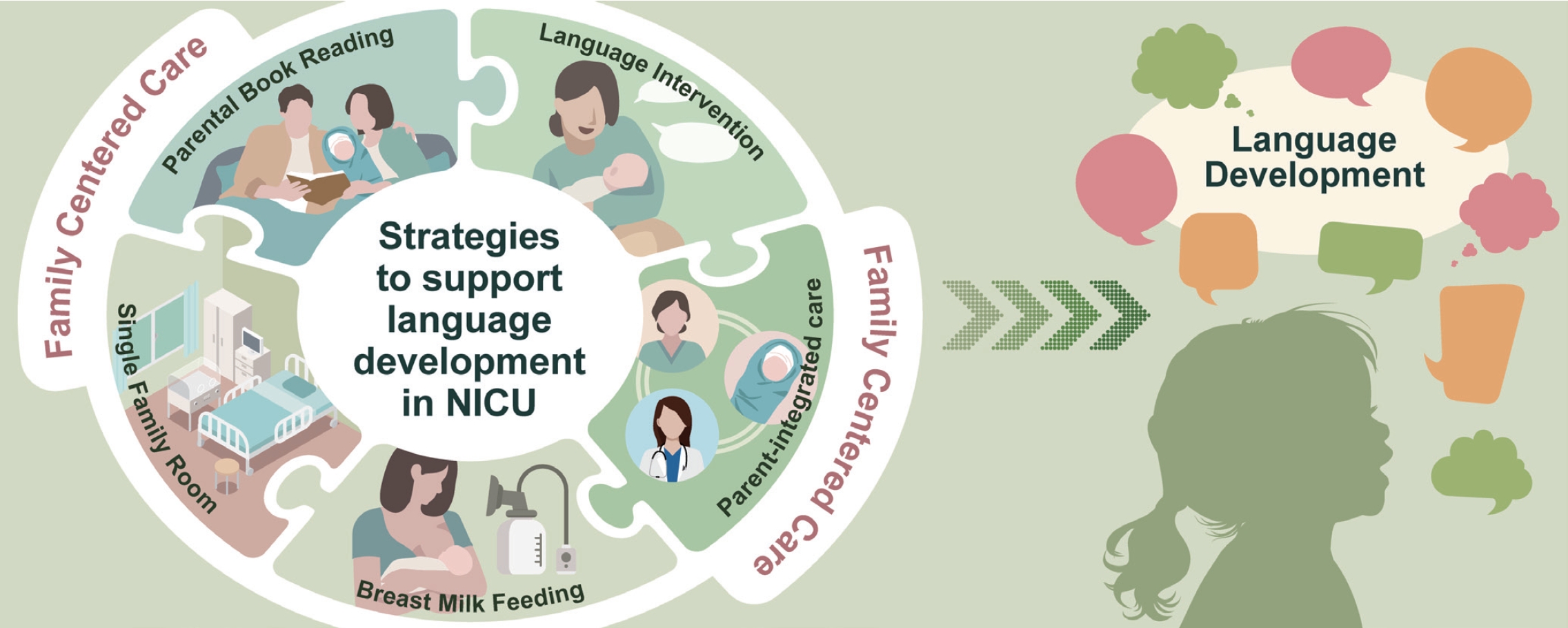
· Preterm infants often experience speech and language development delays during early childhood, impacting children's ultimate outcomes.
· Promoting breastfeeding, increasing parent-infant interactions in a single-family room, promoting a nurturing language environment by parental book reading and language interventions, and parent-integrated interventions in the neonatal intensive care unit could potentially enhance children's language development.
· Integrating these strategies through family-centered care is essential.
- Developmental and Behavioral Medicine
- Screen time among preschoolers: exploring individual, familial, and environmental factors
- Sangha Lee, Donghee Kim, Yunmi Shin
- Clin Exp Pediatr. 2024;67(12):641-650. Published online September 12, 2024
-
This systematic review examined the correlation between screen time and various factors in preschoolers. Findings suggest that media parenting, including setting appropriate media limits, is crucial in protecting against excessive screen exposure. However, limited research has been done on the impact of family and personal factors, particularly with the increasing use of portable devices among young children.
- Rheumatology
- Double-negative T cells in pediatric rheumatic diseases
- Dimitri Poddighe, Tilektes Maulenkul, Kuanysh Dossybayeva, Gulsamal Zhubanova, Zaure Mukusheva, Lyudmila Akhmaltdinova
- Clin Exp Pediatr. 2024;67(12):632-640. Published online September 12, 2024
-
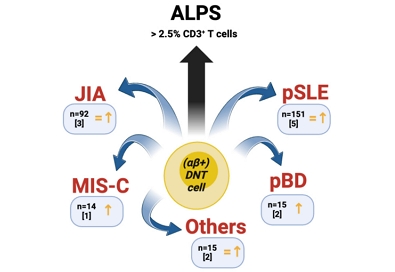
Double-negative T (DNT) cells appear to be increased in several pediatric rheumatic diseases and this finding may be correlated with disease activity to some extent. However, due to significant heterogeneity in several methodological aspects, further investigations in rheumatic children are needed to assess the potential relevance of DNT cells as biomarkers and clarify their immunopathological role.
- Letter to the editor
- Nephrology (Genitourinary)
- Impact of COVID-19 pandemic on healthcare provision in youth with systemic lupus erythematosus
- Punchita Apisrinitirath, Nuanpan Siripen, Pornpimol Rianthavorn
- Clin Exp Pediatr. 2024;67(11):628-631. Published online October 28, 2024
-

- Original Article
- Neonatology (Perinatology)
- Mortality of very low birth weight infants by neonatal intensive care unit workload and regional group status
- Sung-Hoon Chung, Chae Young Kim, Yong-Sung Choi, Myung Hee Lee, Jae Woo Lim, Byong Sop Lee, Ki-Soo Kim; the Korean Neonatal Network
- Clin Exp Pediatr. 2024;67(11):619-627. Published online September 12, 2024
-

Question: How do structural and staffing characteristics of neonatal intensive care units (NICUs) influence the mortality rates of very low birth weight infants (VLBWIs)?
Findings: NICUs with higher staffing levels, particularly with more neonatologists, and those offering advanced care levels were associated with lower mortality rates. Additionally, regional disparities were observed, with some areas demon-strating significantly higher survival rates.
Meaning: Adequate staffing and equitable regional distribution of medical resources are crucial for improving survival outcomes in VLBWIs. Efforts to enhance NICU staffing and address regional healthcare disparities are essential for optimizing care quality and reducing mortality in this vulnerable population.
- Pulmonology
- Efficacies of different treatment strategies for infants hospitalized with acute bronchiolitis
- Hyeri Jeong, Dawon Park, Eun Kyo Ha, Ju Hee Kim, Jeewon Shin, Hey-Sung Baek, Hyunsoo Hwang, Youn Ho Shin, Hye Mi Jee, Man Yong Han
- Clin Exp Pediatr. 2024;67(11):608-618. Published online October 28, 2024
-

· This study analyzed 45 randomized controlled trials (5,061 participants, 13 interventions) of the comparative efficacies of treatments for acute bronchiolitis in infants.
· Inhalation therapy with epinephrine and hypertonic saline significantly reduced the length of hospital stay compared with normal saline.
· Hypertonic saline had the greatest ability to improve the clinical severity score of bronchiolitis in infants younger than 2 years of age.
- Allergy
- Regional differences in diagnosis and management of cow's milk allergy
- Fabian Hendricx, Emma Robert, Jaime A. Ramirez-Mayans, Karen Rubi Ignorosa Arellano, Erick M. Toro Monjaraz, Yvan Vandenplas
- Clin Exp Pediatr. 2024;67(11):601-607. Published online October 28, 2024
-

· Although there is broad consensus on many aspects regarding the symptoms, diagnosis, and treatment of cow's milk allergy, the impact of geographical, cultural, and socioeconomic factors remains unestablished.
· Availability and cost of formula for the management of cow's milk allergy have a major impact on the therapeutic choice.
· Region-specific guidelines for the treatment of cow's milk allergy are required.
- Editorial
- Infection
- Preventing bloodstream infections in children after liver transplantation
- Young June Choe
- Clin Exp Pediatr. 2024;67(11):599-600. Published online April 18, 2024
-
Liver transplantation (LT) is crucial for children with end-stage liver diseases, yet bloodstream infections (BSI) pose significant risks, despite medical advancements. Immunosuppressants, essential for preventing organ rejection, heighten infection susceptibility. Understanding BSI organisms is vital due to antimicrobial resistance. Pediatric LT recipients have unique risk factors, demanding tailored preventive measures. This systematic review on bacterial BSI emphasizes the urgency of effective prevention strategies, considering the high incidence and distinct organism profile. Further research is vital for optimizing antibiotic management and improving outcomes for this vulnerable population.
- Review Article
- General Pediatrics
- Protecting our future: environmental hazards and children’s health in the face of environmental threats: a comprehensive overview
- Jungha Lee, Hyo-Bin Kim, Hun-Jong Jung, Myunghee Chung, So Eun Park, Kon-Hee Lee, Won Seop Kim, Jin-Hwa Moon, Jung Won Lee, Jae Won Shim, Sang Soo Lee, Yunkoo Kang, Young Yoo; The Environmental Health Committee of the Korean Pediatric Society
- Clin Exp Pediatr. 2024;67(11):589-598. Published online October 31, 2024
-

· Exposure to air pollutants cause allergic and respiratory diseases as well as chronic kidney disease.
· Adequate physical activity and proper nutrition are essential for children to maintain good health.
· We must educate people about the harmful effects of noise, blue light, heavy metals and smoke.
· Government and society must actively decrease environ-mental hazards.
- Critical Care Medicine
- Recent updates on systemic treatment of atopic dermatitis
- Jiyoung Ahn
- Clin Exp Pediatr. 2024;67(11):580-588. Published online November 1, 2024
-
Atopic dermatitis (AD) is a complex disease with multifactorial pathogenesis and variable clinical presentation. Up to one-fifth of patients with AD develop moderate to severe disease that is often refractory to classical therapies and can compromise quality of life. This review summarizes recent clinical evidence on biological agents and small-molecule immunotherapies for the treatment of AD.
- Neurology
- Role of nonpharmacological concussion management in children: systematic review of randomized controlled trials
- Andre Marolop Pangihutan Siahaan, Alvin Ivander, Rr. Suzy Indharty, Steven Tandean, Anastasia Grace Milenia Ginting, Masrini Ginting, Felix Khosasi, Elbert
- Clin Exp Pediatr. 2024;67(11):569-579. Published online October 28, 2024
-

The long-term effects of concussion for pediatric patient remains unclear. Children and teenagers do not experience or recover from concussion in the same manner as adults do. Concussions can cause a variety of anatomical and functional alterations. Nonpharmacological approach in pediatric concussion management is an understudied field of research with significant ability to affect prognosis and quality of life. Active rehabilitation and occupational therapy were especially promising.
- Endocrinology
- Lifelong medical challenges and immunogenetics of Turner syndrome
- Won Kyoung Cho
- Clin Exp Pediatr. 2024;67(11):560-568. Published online July 31, 2024
-
· This summary emphasizes the importance of the early diagnosis of Turner syndrome (TS) and presents a multidisciplinary approach to its prevention and management, high-lighting the need for customized care.
· Advancements in immunogenetic research may improve our understanding of TS and improve its outcomes.
· TS encompasses a wide array of medical challenges, including cardiovascular, endocrine, autoimmune, and mental health issues, as well as a heightened cancer risk.
- Growth plate closure and therapeutic interventions
- Ja Hyang Cho, Hae Woon Jung, Kye Shik Shim
- Clin Exp Pediatr. 2024;67(11):553-559. Published online October 28, 2024
-

Height gains result from longitudinal bone growth. Upon adequate growth, growth plate closure limits longitudinal bone growth. To date, gonadotropin-releasing hormone analogs, aromatase inhibitors, C-type natriuretic peptide analogs, and fibroblast growth factor receptor 3 inhibitors have been studied or used as therapeutic interventions to delay growth plate closure and increase human height. The development of more effective therapeutic modalities for short stature, precocious puberty, and skeletal dysplasia is anticipated.
- Clinical Note
- Immunology
- Comparative analysis of rare periodic fever syndromes including the first Korean case of hyperimmunoglobulinemia D and periodic fever syndrome
- Yoonsun Yoon, Hyun Seo Kim, Jung Ok Shim, JungHwa Lee
- Clin Exp Pediatr. 2024;67(10):550-552. Published online September 24, 2024
-

- Original Article
- Neonatology (Perinatology)
- Protective effect of recombinant interleukin-10 on newborn rat lungs exposed to short-term sublethal hyperoxia
- Hyeon-Soo Lee, Young-Joon Ryu, Min-Jae Lee
- Clin Exp Pediatr. 2024;67(10):540-549. Published online September 27, 2024
-

Lung injury is generated from the early stage of hyperoxia through the biologic effects of cell death and inflammatory response, which eventually leads to evolution of bronchopul-monary dysplasia. Therefore, a protective measure against hyperoxia-induced lung injury is needed. The present study observed that anti-inflammatory cytokine, interleukin-10 had protective effects on newborn rat lungs from injury induced at the early stage of hyperoxia, by preventing cell death and down-regulating inflammatory response.
- Nutrition
- Energy drink consumption among Korean adolescents: prevalence and associated factors
- Jee-Seon Shim, Jeong Mi Lee
- Clin Exp Pediatr. 2024;67(10):531-539. Published online September 24, 2024
-

Question: How prevalent is energy drink consumption among Korean adolescents and what are the associated factors?
Findings: The prevalence of energy drink consumption among Korean adolescents increased from 3.2% in 2014 to 12.2% in 2019. Energy drink consumption varies according to sociode-mographic and individual factors.
Meaning: Policies and educational strategies are needed to reduce energy drink consumption in adolescents.
- General Pediatrics
- Effect of online infant care training and postpartum counseling based on Meleis' transition theory on mothers' readiness for care and breastfeeding: a randomized controlled trial
- Fatma Şule Bilgiç, Gülçin Bozkurt
- Clin Exp Pediatr. 2024;67(10):521-530. Published online September 27, 2024
-

Question: Do interventions based on Meleis' transition theory affect mothers' readiness for baby care and breastfeeding?
Findings: We found a statistically significant difference between the intervention and control groups in mothers' readiness for newborn care and breastfeeding (P<0.001).
Meaning: This intervention increased breastfeeding rates while ensuring that mothers were ready to care for their babies and prepared for the role of motherhood.
- Editorial
- Immunology
- Utility of eosinophil granule proteins in management of pediatric chronic cough
- Chang-Keun Kim
- Clin Exp Pediatr. 2024;67(10):519-520. Published online April 17, 2024
-

· Pediatric chronic cough often involves eosinophilic inflammation; however, objective measurements are not routinely used in treatment decisions.
· Accurate biomarkers of eosinophil activity, such as eosinophil-derived neurotoxin (EDN) and cationic proteins (ECP), should be used. EDN, which overcomes the shortcomings of ECP, recently received approval for use in Korean healthcare settings.
· EDN and ECP can play a role in treatment period and drug selection decisions.
-

-
-
6.02024CiteScore98th percentilePowered by
-
Impact Factor3.6
-
- TOPICS
- ARTICLE CATEGORY
- Editorial Office
-
Korean Pediatric Society
#1606 Seocho World Officetel, 19 Seoun-ro, Seocho-ku, Seoul 06732, Korea
Tel: +82-2-3473-7306 Fax: +82-2-3473-7307 E-mail: office@e-cep.org
Clinical and Experimental Pediatrics is an open access journal. All articles are distributed under the terms of the Creative Commons Attribution NonCommercial License (http://creativecommons.org/licenses/by-nc/4.0/)
Copyright © 2025 by Korean Pediatric Society.











